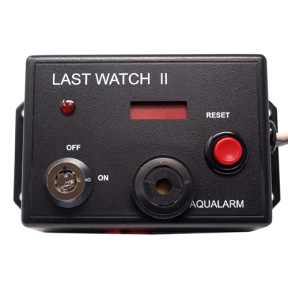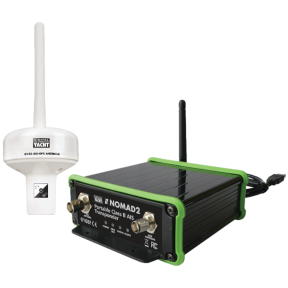AIS Transponders, Receivers & Transceivers
19 resultsCategoryMarine Electronics & Navigation Instruments
Show In-Stock Only

DIGITAL YACHT
AIT1500N2K - AIS Transponder with Built-in GPS & NMEA 2000
SKU: 1042704 | Item ID: DYT ZDIGAIT1500N2K
$749.93
In Stock

Raymarine
AIS700 - Class B Transceiver & Splitter
SKU: 1011608 | Item ID: RAY E70476
$1,199.99
In Stock

Aqualarm
Last Watch II - Digital Helmsman Monitor
SKU: 158254 | Item ID: AQA 20011
$204.13
In Stock

Vesper
Cortex M1 SOTDMA SmartAIS Transponder Hub w/ Vessel Monitoring
SKU: 1019940 | Item ID: VES 010-02815-00
$1,349.99
In Stock

DIGITAL YACHT
AIS100PRO (NMEA & USB) AIS Receiver
SKU: 1042696 | Item ID: DYT ZDIGAIS100P
$349.94
In Stock

Garmin
AIS 800 Blackbox Transceiver
SKU: 1010981 | Item ID: GMN 010-02087-00
$999.99
In Stock

B&G Electronics
NAIS-500 Class-B AIS Transponder
Available in 2 options
$829.00 - $1,099.00
In Stock

Vesper
H1P Cortex Wireless VHF Handset w/ Battery Power
SKU: 1019942 | Item ID: VES 010-02816-10
$649.99
In Stock

DIGITAL YACHT
AISNet with Built in VHF Splitter
SKU: 1042701 | Item ID: DYT ZDIGAISNETSP
$1,199.93
In Stock

Vesper
V1 Cortex VHF Radio w/ SOTDMA SmartAIS & Remote Vessel Monitoring
SKU: 1019939 | Item ID: VES 010-02814-20
$1,899.99
In Stock

Vesper
H1 Cortex Wired VHF Handset
SKU: 1019941 | Item ID: VES 010-02816-00
$649.99
In Stock

Shakespeare
5215-AIS Squatty Body AIS Whip Antenna - 3 ft, 3 dB
SKU: 208397 | Item ID: SHK 5215-AIS
$83.51
In Stock

Shakespeare
396-1-AIS Classic AIS Antenna - 4 ft, 3 dB
SKU: 184875 | Item ID: SHK 396-1-AIS
$209.76
In Stock

DIGITAL YACHT
AIS Transponder - Wi-Fi & optional NMEA
Available in 2 options
$749.93 - $849.93
In Stock

Shakespeare
6396-AIS-R Phase III AIS Antenna - 4 ft, 3 dB
SKU: 369436 | Item ID: SHK 6396-AIS-R
$489.61
In Stock

DIGITAL YACHT
AIT2500 - Class B+ 5W AIS Transponder with GPS Antenna
SKU: 1042706 | Item ID: DYT ZDIGAIT2500
$999.94
Out of Stock

Shakespeare
6400-R Phase III VHF Antenna - 4 ft, 3 dB
SKU: 456069 | Item ID: SHK 6400-R
$387.70
Special Order Only

DIGITAL YACHT
Nomad 2 - Portable AIS Transponder
SKU: 1042755 | Item ID: DYT ZDIGNMD2
$949.93
In Stock

DIGITAL YACHT
AIT5000 - Class B+ AIS Transponder with Wi-Fi, NMEA & VHF Splitter
SKU: 1042707 | Item ID: DYT ZDIGAIT5000
$1,299.93
Out of Stock
Fisheries Supply is your premier supplier of AIS transponders and receivers from top brands. We offer a full range of quality AIS marine tracker systems, antennas, and radios to get you the information you need to avoid collisions in time. For a great compliment to AIS browse our selection of marine radars, or to learn more about AIS systems, read Protect Your Boat with AIS.